Part of museum work is loaning objects to other institutions. The State Museum currently has 22 active loans, most of which are in-state and straightforward. But when an international border and a pandemic are involved, the situation can get a bit more complicated. Here’s what happened when an art gallery in Canada requested a rare artifact for an exhibit a few years back.
Birth: In late 2018, the MacKenzie Art Gallery in Regina, Saskatchewan, requested the loan of a significant piece of our shared history: a buffalo robe painted by Hunkpapa Lakota leader Sitting Bull. Sitting Bull painted the robe between 1877 and 1881 while seeking asylum in what is now Saskatchewan. It is the only known buffalo hide painting by Sitting Bull in existence. The robe, which Sitting Bull initially gave to Canadian trader Gus Heddrich, entered the State Historical Society of North Dakota’s collection in 1945 after Heddrich and his wife died.
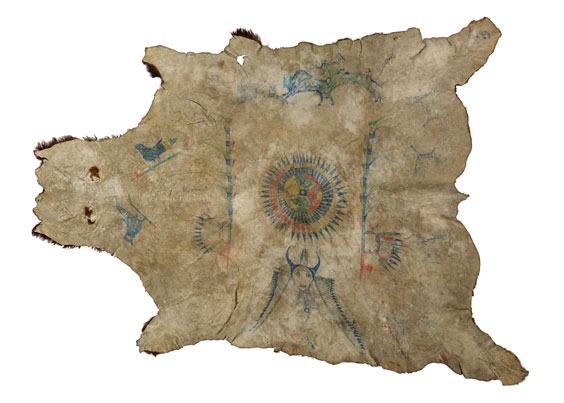
Buffalo robe painting by Sitting Bull. SHSND 10117
When institutions request loans from the state’s collection, some boring but important paperwork must be completed. Collections staff reviewed the reason for the loan, the MacKenzie Art Gallery’s exhibit plans for the painting, and details about the gallery’s light levels and climate control. The loan request noted: “This artwork could be considered one of the most significant Indigenous paintings completed within Saskatchewan but has never been exhibited in Saskatchewan. It would be of enormous interest to the descendants of Sitting Bull’s people as well as the larger community.” State Historical Society staff agreed—the loan was approved, and its journey began.
Transport: Some not-so-boring paperwork followed. Our registrars (aka paperwork gurus) exchanged over 100 emails with the gallery’s customs broker, U.S. and Canadian customs officials, and U.S. Fish and Wildlife Service personnel to complete all the forms required to transport the robe safely across the border. Due to the robe’s cultural and historical significance it required a courier, that is, a personal escort on its travels. Perhaps not surprisingly, the cost of international fine art couriers is a bit prohibitive, so State Historical Society staff decided to make the trek with the robe themselves. The robe was carefully packed in a large shipping crate, and in June 2019, two staff members made the six-hour drive from Bismarck to Regina, Canada.

All packed up and on the road.
Exhibit: From June 2019 to April 2020, Sitting Bull’s hide painting featured prominently in The Permanent Collection: Walking with Saskatchewan exhibition. The exhibit explored the diverse ways Indigenous and non-Indigenous artists in the province related to land, and how objects carry histories and stories. You can learn more about the exhibit on the MacKenzie’s website. Staff at the art gallery developed a variety of programming around the buffalo robe, including public talks with First Nations members. Artist and Knowledge Keeper Wayne Goodwill was at the gallery to welcome the robe on behalf of the Lakota people of Saskatchewan. He also shared some of the meanings behind the images on the hide painting in this video.
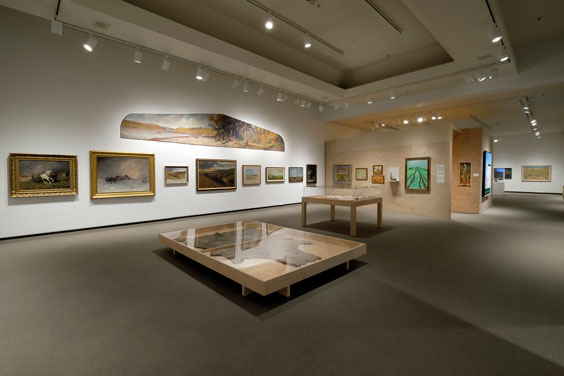
View of Sitting Bull’s robe in The Permanent Collection: Walking with Saskatchewan exhibit. Photo by Don Hall, courtesy MacKenzie Art Gallery
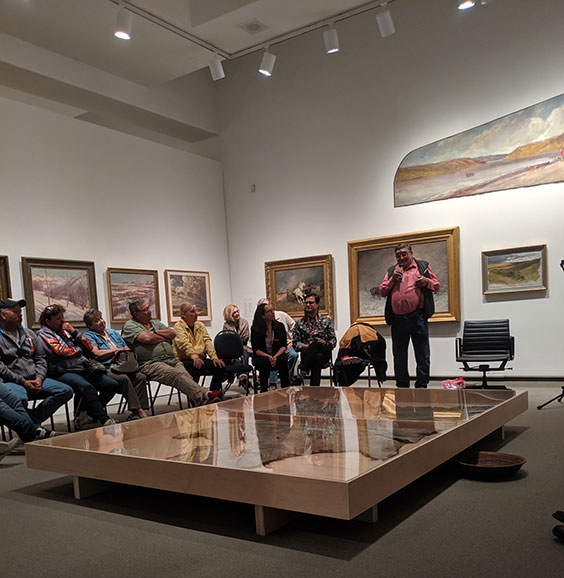
Opening event with Lakota Knowledge Keeper Wayne Goodwill on June 20, 2019. Photo by Don Hall, courtesy MacKenzie Art Gallery
Extension: The loan’s original end date was set for May 30, 2020. Agency staff had their passports ready, but the universe had other ideas. The U.S.-Canada border was closed to nonessential travel for nineteen months. Between March 2020 and November 2021, the State Historical Society and the MacKenzie signed two loan extensions. This additional time led to unique opportunities, including extra months for visitors to view the robe. During the robe’s extended stay, the gallery’s “Art and Concepts of Game Design for Youth” class used it as inspiration for a video game project that combined Indigenous oral storytelling with interactive design. From December 2020 to April 2021, the robe and the students’ work were showcased in the exhibit Travelling Memory: Sitting Bull’s Robe, The Mackenzie’s Art School, and the Art and Concepts of Game Design for Youth.
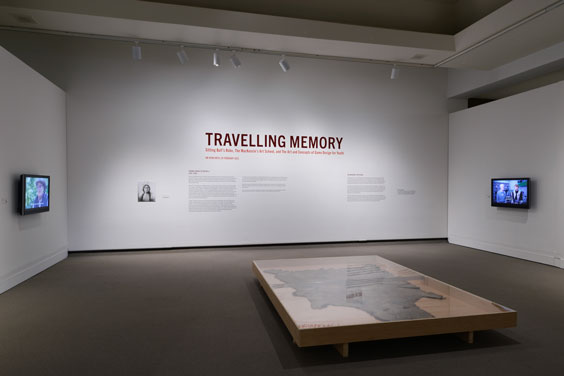
The Travelling Memory exhibit highlighted a video game project by eighth-grade students at the MacKenzie Art School. The project gave audience members an interactive way to experience the story of the Hunkpapa Lakota leader Sitting Bull. Photo by Don Hall, courtesy MacKenzie Art Gallery
Return: Since every North Dakotan and Canadian knows that safe travel in the winter (or even spring) is no guarantee, arrangements to pick up the robe were made for early June 2022. Once again, the registrars emailed and traded paperwork like crazy to ensure a pain-free border crossing.
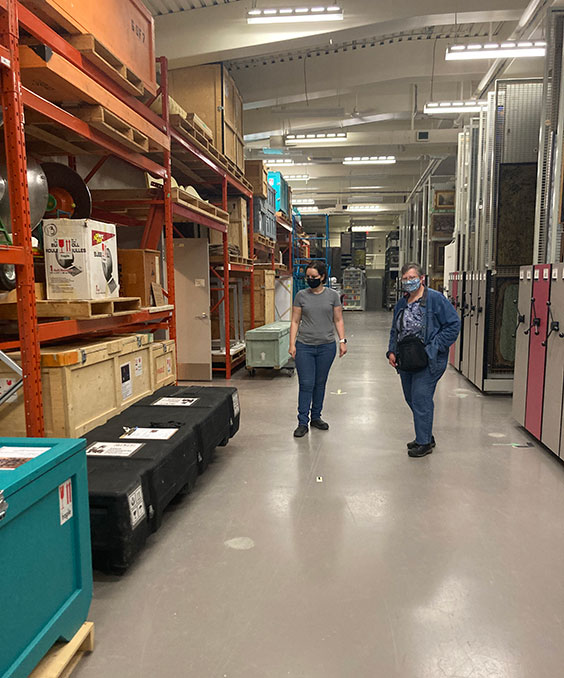
Reunited, and it feels so good! The robe was patiently waiting for agency staff at the MacKenzie Art Gallery collections storage area.
Sitting Bull’s buffalo hide painting returned to Bismarck on June 4, 2022. Previously, it was exhibited at the ND Heritage Center & State Museum for over thirty years. But continuous display, exposure to light, and repeated handling is stressful on natural materials. So for the foreseeable future it will be resting in storage to help preserve the colored pigment and the condition of the hide.

